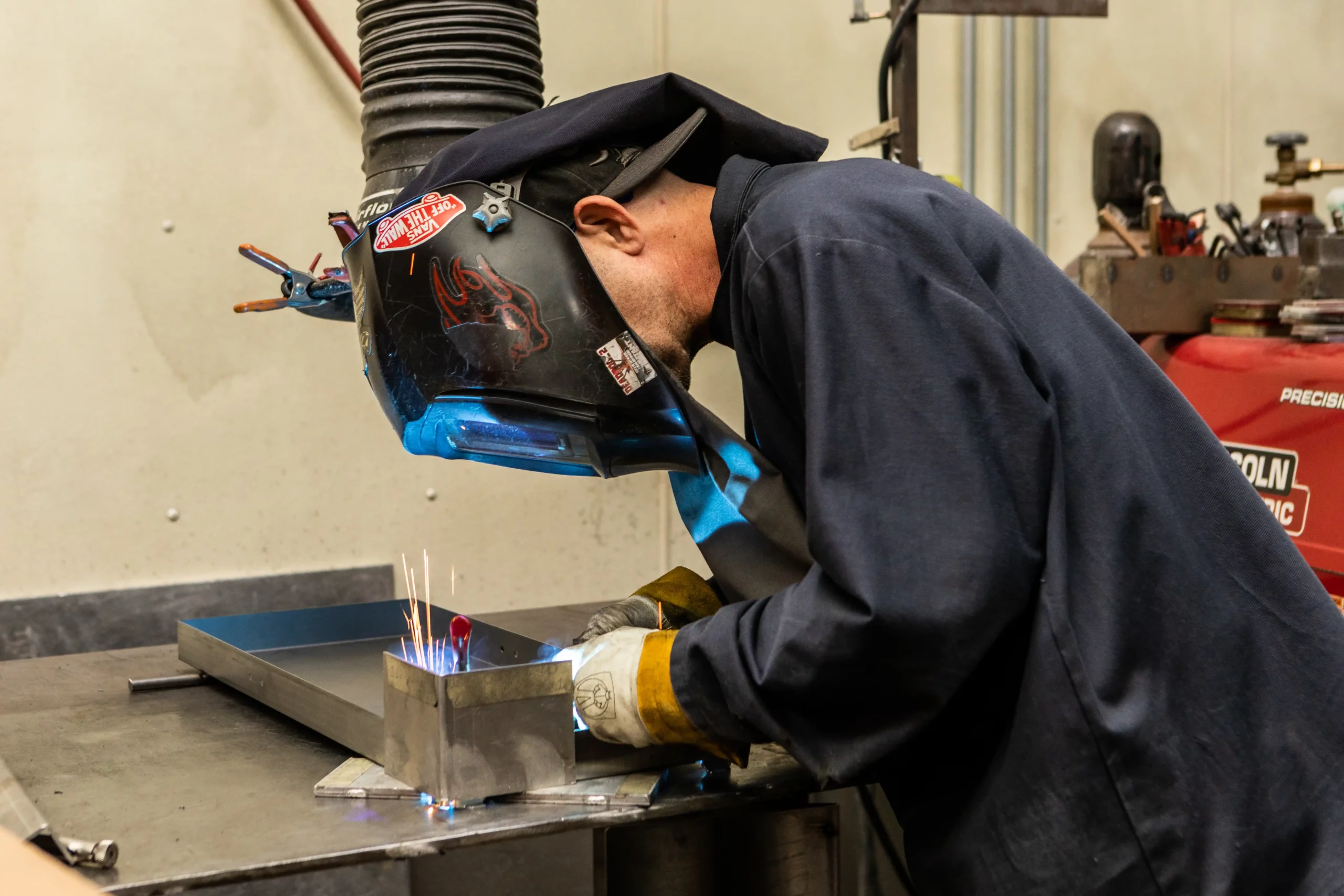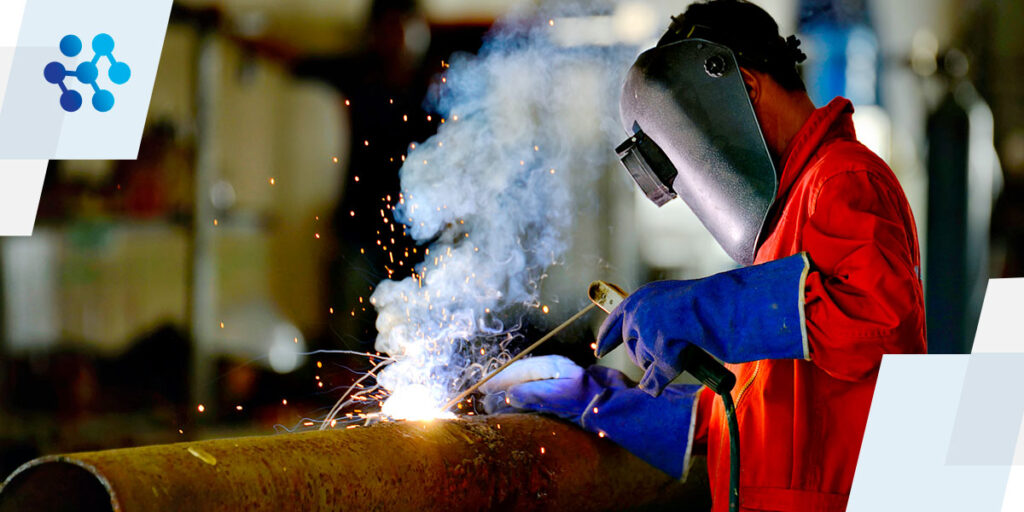Usual Welding Fixing Issues and Just How to Address Them Successfully
Welding fixings typically run into a series of issues that can jeopardize the honesty of the end product. Usual troubles include poor penetration, porosity, and imbalance, to name a few. Each problem offers one-of-a-kind obstacles that need specific strategies for resolution. Comprehending these problems is important for welders intending to boost their skills and outcomes. This conversation will certainly check out these common welding fixing issues and effective techniques to resolve them.
Insufficient Infiltration
Inadequate infiltration happens when the weld metal falls short to completely fuse with the base material, causing weak joints and possible structural failures. This concern typically stems from inadequate warm input, inaccurate electrode angle, or incorrect welding rate. Welders might run into poor infiltration because of a mistake of the required parameters for a details material density or kind. Furthermore, contamination on the base product's surface area can impede reliable bonding, intensifying the trouble. To resolve inadequate infiltration, welders should ensure suitable settings on their devices and preserve a tidy work surface area. Routine assessment of welds is advised to identify any type of shortages early, permitting timely improvements and the avoidance of endangered architectural stability in welded settings up.
Porosity
Porosity is a common issue in welded joints that manifests as small gas bubbles trapped within the weld metal. This flaw can endanger the honesty of the weld, causing minimized stamina and possible failure under stress and anxiety. Montana Mobile Welding and Repair Belgrade Fabrication. Porosity usually occurs from contamination, dampness, or improper welding strategies, which allow gases to leave into the liquified weld pool. To address porosity, welders should guarantee proper surface preparation, maintain a tidy working environment, and use suitable welding criteria. In addition, selecting the appropriate filler material and protecting gas can minimize gas entrapment. Normal assessment and testing of welds can assist recognize porosity early, ensuring timely corrective activities are taken, thus protecting the quality and dependability of the bonded structure
Misalignment
Misalignment in welding can arise from different elements, consisting of inappropriate arrangement and thermal expansion. Understanding the origin is vital for efficient resolution. Numerous modification techniques are offered to realign parts and guarantee structural integrity.
Reasons for Imbalance
Welding misalignment usually stems from a variety of underlying problems that can endanger structural integrity. One key reason is incorrect fit-up of parts before welding, which can bring about gaps and uneven surfaces. Variants in thermal expansion throughout the welding procedure can likewise cause distortion, particularly if the products being signed up with have various coefficients of growth. In addition, insufficient fixturing and clamping may fail to hold parts safely in position, leading to movement throughout welding. Poorly maintained tools, consisting of welding machines and devices, might present variances in the weld bead, further adding to imbalance. Operator error, stemming from not enough training or experience, can also play a considerable role in creating misaligned welds.

Modification Strategies Offered
Addressing imbalance properly calls for a combination of corrective methods tailored to the certain issues at hand. One usual approach is making use of jigs or components to hold elements in the appropriate placement throughout welding, making certain regular alignment. In addition, preheating the products can aid reduce distortion and boost fit-up. For considerable imbalance, mechanical realignment methods, such as using hydraulic jacks or clamps, can be utilized to correct the position before welding. Post-weld heat treatment might also be essential to soothe anxieties brought on by imbalance. Ultimately, careful evaluation and modification during the configuration phase can protect against imbalance issues from ending up being substantial troubles, advertising a smoother welding process and improving overall architectural integrity.
Distortion
Distortion is a common challenge in welding that can develop from different variables, consisting of irregular heating & cooling. Comprehending the causes of distortion is essential for carrying out reliable prevention techniques. Addressing this problem not just improves architectural integrity but likewise boosts the total top quality of the weld.
Sources of Distortion
When subjected to the intense warmth of welding, products usually go through modifications that can bring about distortion. This phenomenon primarily arises from thermal development and contraction throughout the welding process. As the weld location warms up, the product expands; upon cooling, it acquires, which can create interior stress and anxieties. Additionally, uneven home heating throughout a work surface can worsen these stress and anxieties, causing warping or bending. The kind of material additionally plays a substantial function; metals with differing thermal conductivity and coefficients of development might respond in a different way, causing unforeseeable distortions. Additionally, bad joint layout and insufficient fixturing can contribute to misalignment during welding, enhancing the probability of distortion. Recognizing these causes is important for reliable welding repair and prevention techniques.
Avoidance Techniques
Efficient prevention methods for distortion throughout welding concentrate on controlling warm input and ensuring appropriate joint style. Preserving a consistent warmth input assists to minimize thermal growth and tightening, which can result in distortion. Using techniques such as preheating the workpiece can also reduce the temperature level gradient, promoting uniform heating. Furthermore, picking ideal joint designs, such as T-joints or lap joints, can enhance security and reduce stress concentrations. Applying appropriate fixturing to safeguard the workpieces in position even more aids in maintaining placement during the welding procedure. Lastly, staggered welding sequences can distribute warm extra equally, avoiding local distortion. By applying these strategies, welders can significantly lower the likelihood of distortion and boost the general top quality of their welds.
Breaking
Cracking is a typical issue come across in welding mig mag welding repairs, usually resulting from numerous factors such as incorrect cooling rates, material option, or insufficient joint preparation. The event of splits can significantly jeopardize the stability of the weld, causing potential failures throughout operation. More Info To resolve this issue, welders should first analyze the root triggers, ensuring that materials work and suitably chosen for the details application. Additionally, controlling the air conditioning price throughout the welding process is necessary; quick cooling can generate stress and result in cracking. Proper joint design and preparation also add to lessening the threat. Applying these strategies can improve weld top quality and resilience, inevitably lowering the chance of breaking in finished weldments.

Incomplete Fusion
A significant concern in welding repair work is insufficient combination, which takes place when the weld steel does not sufficiently bond with the base product or previous weld passes - Welding. This defect can result in weak points in the joint, potentially jeopardizing the honesty of the welded framework. Elements contributing to incomplete blend include insufficient warmth input, inappropriate welding strategy, and contamination of the surface areas being joined. To resolve this concern effectively, welders should assure proper pre-weld cleansing and surface preparation, in addition to readjust their welding specifications to attain adequate penetration and combination. Routine examination during the welding process can additionally assist recognize insufficient combination early, permitting timely restorative actions to boost the general quality of the weld
Overheating
While welding repairs can enhance structural integrity, overheating presents a substantial obstacle that can result in material destruction. Extreme warmth during welding can change the mechanical homes of steels, resulting in minimized strength, enhanced brittleness, and bending. This phenomenon is particularly essential in high-stress applications where structural dependability is critical. Identifying overheating can include aesthetic assessments for staining or distortion, in addition to checking temperature level throughout the welding process. To mitigate the threats connected with overheating, welders ought to use proper methods, such as managing heat input, changing traveling rate, and utilizing ideal filler materials. go to this web-site Furthermore, applying pre- and post-weld heat treatments can assist restore product homes and boost the overall high quality of the fixing, guaranteeing long-lasting efficiency and security.
Regularly Asked Questions
What Are the Typical Indicators of a Welding Flaw?

Exactly How Can I Examine My Welds for Top quality?
To evaluate welds for quality, one can utilize aesthetic examinations, ultrasonic testing, and radiographic approaches. Each method guarantees structural stability, identifies problems, and confirms adherence to specified standards, eventually improving the reliability of the bonded joints.
What Safety and security Safety Measures Should I Take While Welding?
When welding, one need to focus on safety and security by wearing appropriate personal safety equipment, making sure proper ventilation, protecting combustible products away, keeping a clean work area, and recognizing surroundings to stop injuries and mishaps.
Can I Repair a Weld Without Remodeling the Entire Joint?
Repairing a weld without redesigning the entire joint is possible, relying on the damages (Belgrade Fabrication). Methods such as grinding, adding filler material, or using a welding procedure can efficiently address certain flaws while maintaining the bordering framework
What Tools Are Necessary for Reliable Welding Fixes?
Vital tools for effective welding repair services consist of a welding equipment, cord brush, grinder, safety equipment, clamps, and filler materials. Each tool plays an important role in making sure quality and safety throughout the repair service process. Porosity commonly develops from contamination, wetness, or inappropriate welding techniques, which allow gases to get away into the molten weld swimming pool. Badly conserved devices, consisting of welding machines and tools, might introduce variances in the weld bead, more contributing to imbalance. When subjected to the intense heat of welding, materials frequently go through changes that can lead to distortion. Breaking is a common problem experienced in welding fixings, frequently resulting from different aspects such as incorrect cooling rates, product selection, or insufficient joint preparation. A considerable problem in welding repair services is incomplete combination, which happens when the weld steel does not appropriately bond with the base product or previous weld passes.